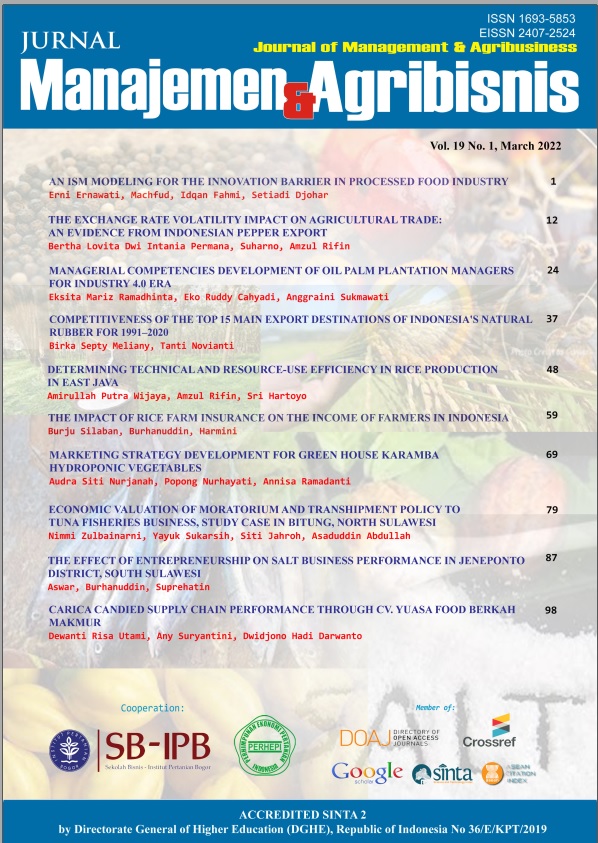Competitiveness of The Top 15 Main Export Destinations of Indonesia's Natural Rubber for 1991–2020
Abstract
This study aims to analyze the position and performance of Indonesia's natural rubber exports in terms of the concept of comparative advantage in the market world. The data used in this study were sourced from UN Comtrade, which is processed with a 30-year data series (1991-2020) and is categorized into six periods. The analytical methods used are Structural Trend Ranking (STR), Revealed Comparative Advantage (RCA), Export Product Dynamic (EPD), and X-Model. The results showed that 15 countries have consistently been the main Indonesian natural rubber market for 30 years. The RCA analysis showed that Indonesian natural rubber had strong competitiveness in all destination countries, except India in the first period. In contrast, the EPD analysis found that Indonesia's rubber market position was not always static and competitive. There was shown in the period 2011-2015, the average position of Indonesia's natural rubber market is in a market position that is not wanted to "retreat" in export destination countries. However, based on the X-Model results, the average Indonesian natural rubber is in a potential market position in all export destination countries in the 1991-2020 period.
Keywords: Export Product Dynamic (EPD), natural rubber, Revealed Comparative Advantage (RCA), Structural Trend Ranking (STR), x-model
Authors
Authors who publish with this journal agree to the following terms:
- Authors retain copyright and grant the journal right of first publication with the work simultaneously licensed under a Creative Commons Attribution License that allows others to share the work with an acknowledgement of the work's authorship and initial publication in this journal.
- Authors are able to enter into separate, additional contractual arrangements for the non-exclusive distribution of the journal's published version of the work (e.g., post it to an institutional repository or publish it in a book), with an acknowledgement of its initial publication in this journal.
- Authors are permitted and encouraged to post their work online (e.g., in institutional repositories or on their website) prior to and during the submission process, as it can lead to productive exchanges, as well as earlier and greater citation of published work (See The Effect of Open Access).

